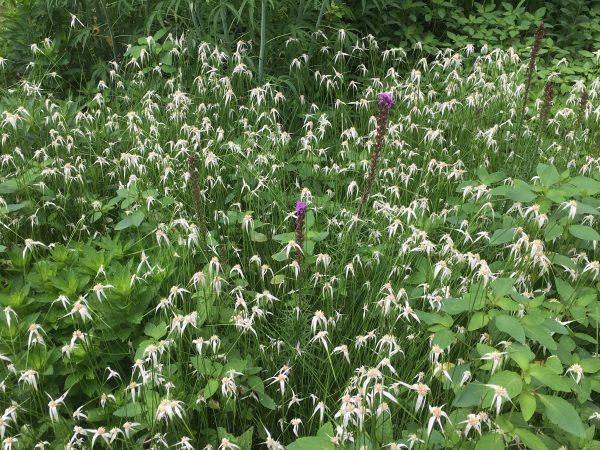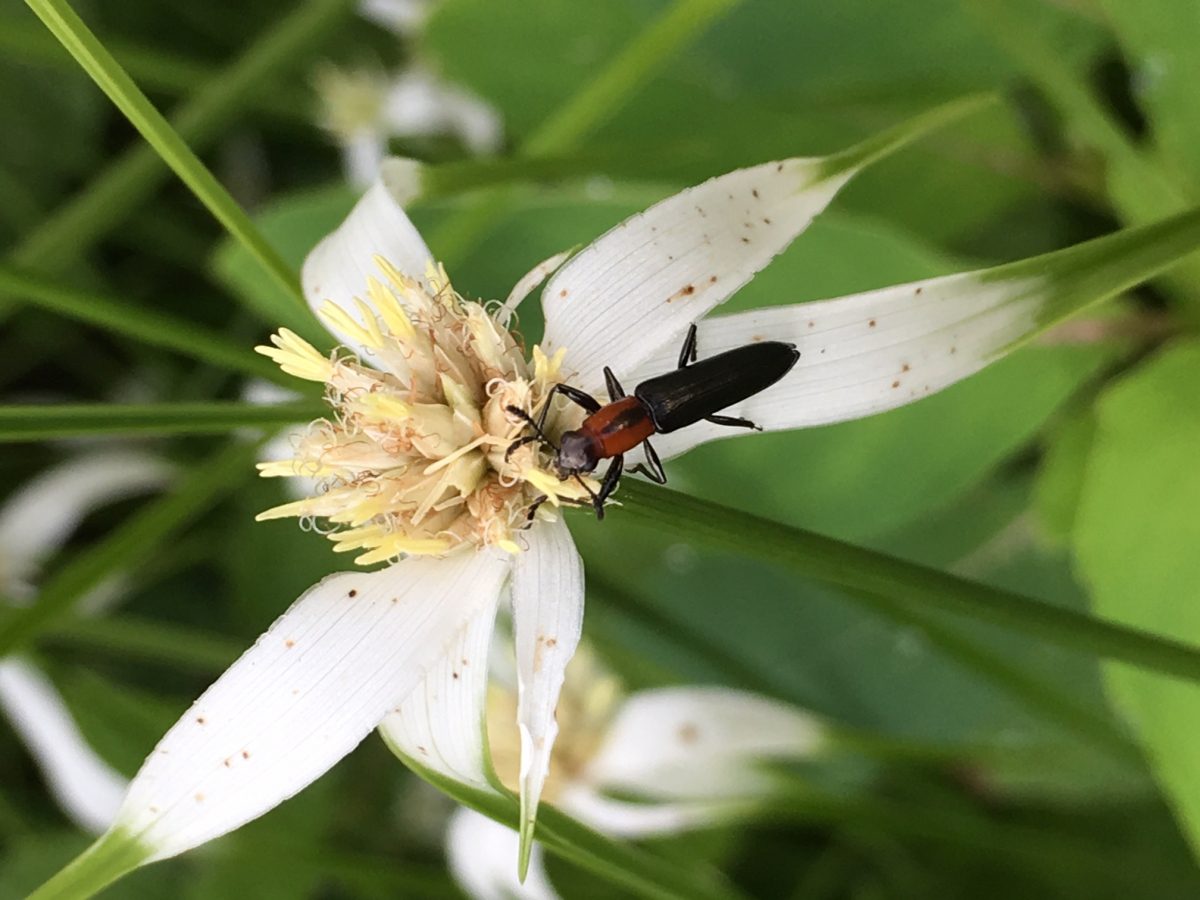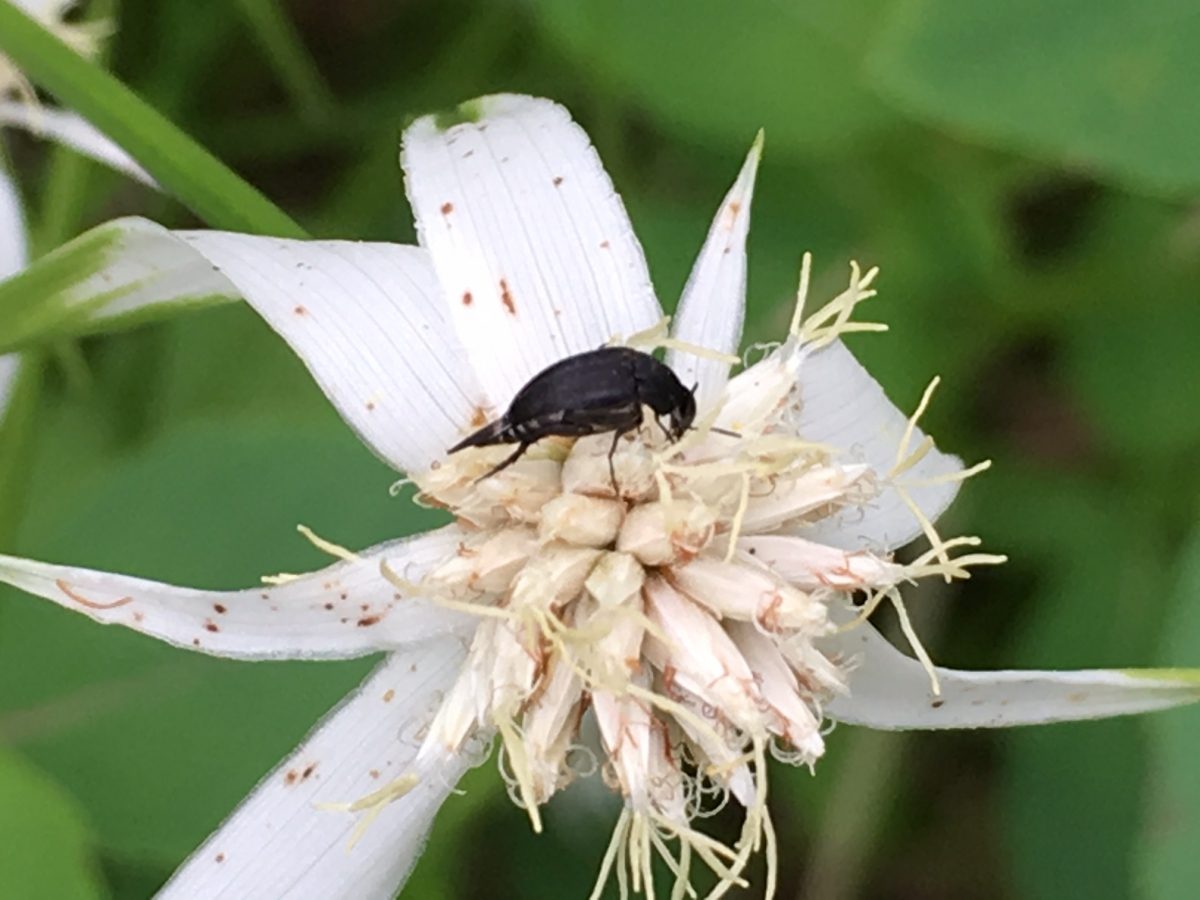A native plant that adds habitat – and flair – across North Carolina

During a whirlwind visit to Fort Fisher this month, I sped by the historic bunkers and raced through the N.C. Aquarium. My husband and I were on foot, on a mission to catch the next ferry to Southport, but the sight of white-bracted sedge spilling from the humble ditches along Highway 421 stopped me in my tracks.
I couldn’t resist snapping a few pictures. After planting a foot in the weedy margin, my ankle started to prickle and burn, painfully enough to draw my attention away from the sedge. Fire ants had covered my shoe and worked their way around the top of my sock.
The bites still haven’t faded, but seeing a stand of this stunning plant in the wild has been a salve. The tiny flowers at the center are fairly nondescript, but they’re surrounded by six or more flashy white bracts that droop gracefully and taper to bright green tips. Anything so oddly beautiful is bound to inspire comparisons. To me, they conjure a flock of terns – slender, white birds with deeply forked tails and long, pointy wings.
Found primarily along the Southeast coast, white-bracted sedge (Dichromena latifolia or Rhynchospora latifolia) also grows with abandon in the wet, sunny meadow I’ve created in my Charlotte backyard. Four years ago, I started with three small sprigs. They’ve now spread (via rhizomes) to cover roughly 30 square feet. While white-bracted sedge is aggressive, I wouldn’t label it a thug. In my garden, it weaves around compatible perennials such as ironweed, cardinal flower, blue mist flower and liatris. Jewelweed seeds into the gaps. In my amended Piedmont clay, they grow upwards of two feet tall, more than twice the size of the sedges I saw along the highway.

A beetle on a white-bracted sedge flower. Photo: Ruth Ann Grissom.
The flowers attract a crazy array of pollinators – bumblebees and honeybees, bizarre bugs and colorful moths, tiny bees and flies I can hardly see, let alone identify. The bracts remain attractive deep into fall, even after a hard freeze has turned them to parchment. At that point, they look especially fetching next to the bright, fluffy seedheads of narrowleaf ironweed.
I grow a sedge native to the Piedmont in a slightly drier section of the meadow. Gray’s sedge (Carex grayi) is a clumper. It has strappy evergreen foliage similar to liriope, but its seedheads are darkly intriguing. The spiky green balls could have served as the model for deadly medieval weapons. Like white-bracted sedge, they are long-lasting stars of any flower arrangement.
Mixing shrubs and perennials isn’t my forte, but a clump ended up next to a Virginia sweetspire in my border. Together, they create a captivating combination worthy of Fine Gardening. The arching foliage of the sedge echoes the shrub’s drooping blooms. The upright seedheads provide structural contrast, and their light green color is reflected in the sweetspire’s leaves.
Native sedges are also becoming more popular for use in woodland gardens. Paula Gross, the recently retired associate director of the UNC Charlotte Botanical Garden, is an advocate and early adopter. She likes to use them as a textural foil for heuchera and ferns. Unlike liriope, they benefit native insects and birds.

An insect on a white-bracted sedge. Photo: Ruth Ann Grissom.
She highlighted a few of her favorites in a presentation at a N.C. Native Plant Society meeting this spring. Seersucker sedge (Carex plantaginea) has crinkly foliage, the sort of feature gardeners find irresistible. Unfortunately, it prefers part shade and even moisture, which is hard without supplemental water. Pennsylvania sedge (Carex pensylvanica) tolerates drier soils and can take a little more sun. So can blue wood sedge (Carex flaccosperma), which provides a nice color, as well as textural, accent. A similar species (Carex laxiculmis) actually has a named variety called ‘Bunny Blue.’
As Gross observed, “Passionate growers who saw the potential of low maintenance plants with a contemporary aesthetic just kept growing them until demand caught up.”
And sedges are no long just for savvy gardeners. Gross says they’re being used more often in public landscapes.
Thanks to her presentation, I now pay more attention to sedges in the forests of the Uwharries. They stand out in winter when the forest floor is bright and many herbaceous plants are still dormant. I used to wonder if they were just misplaced clumps of grass, but according to Gross, “If it’s in the woods, it’s likely a sedge.”